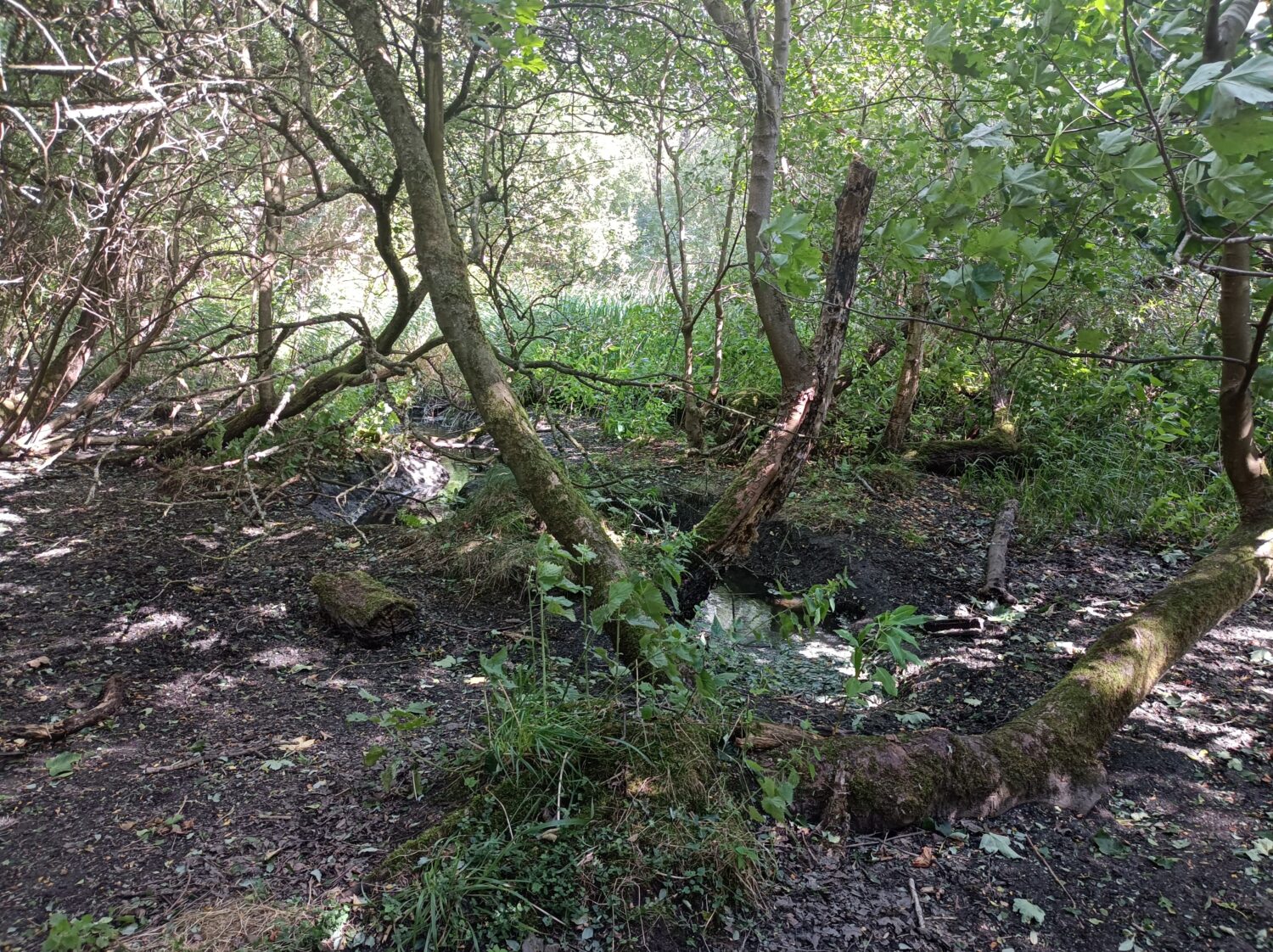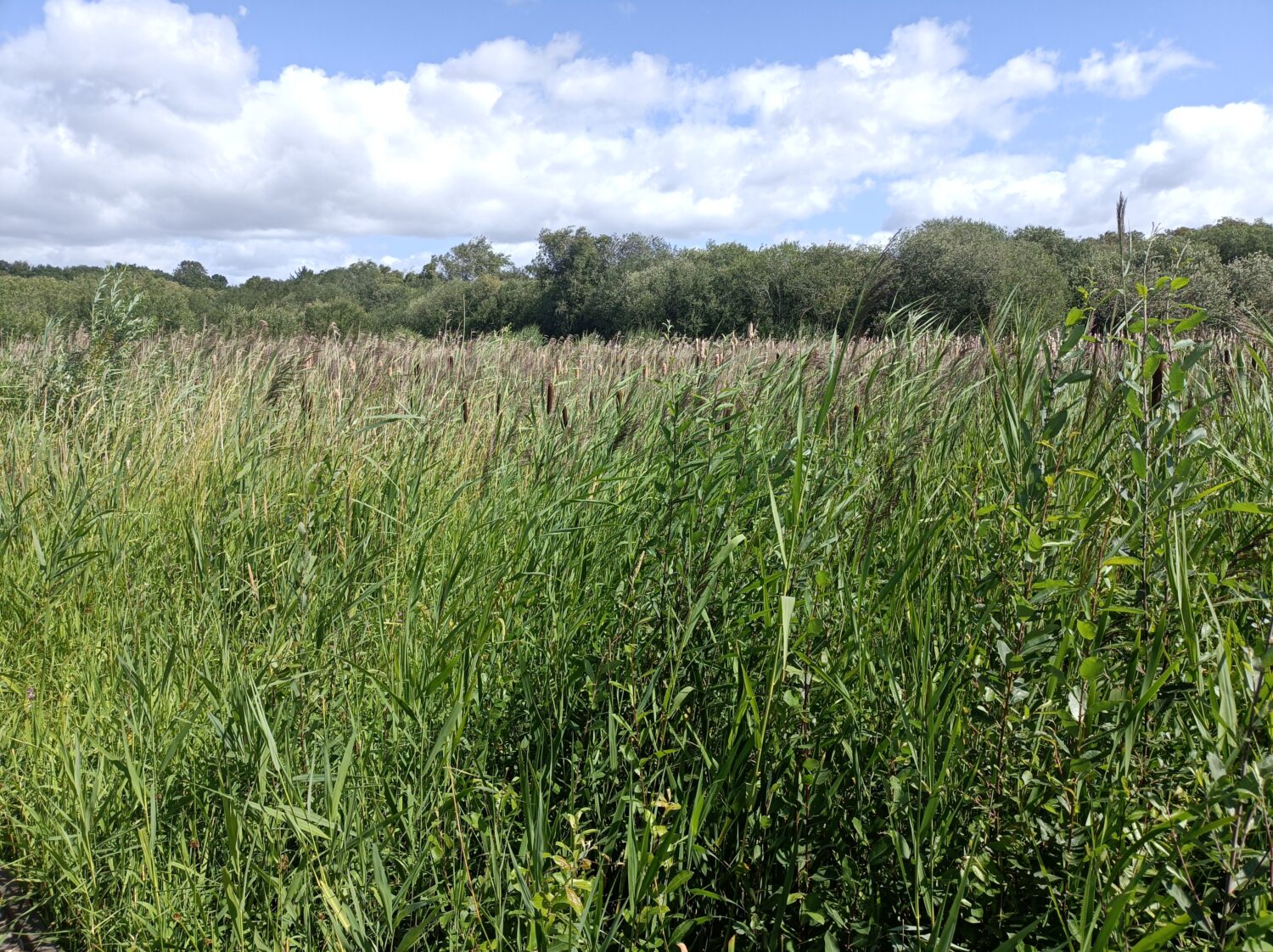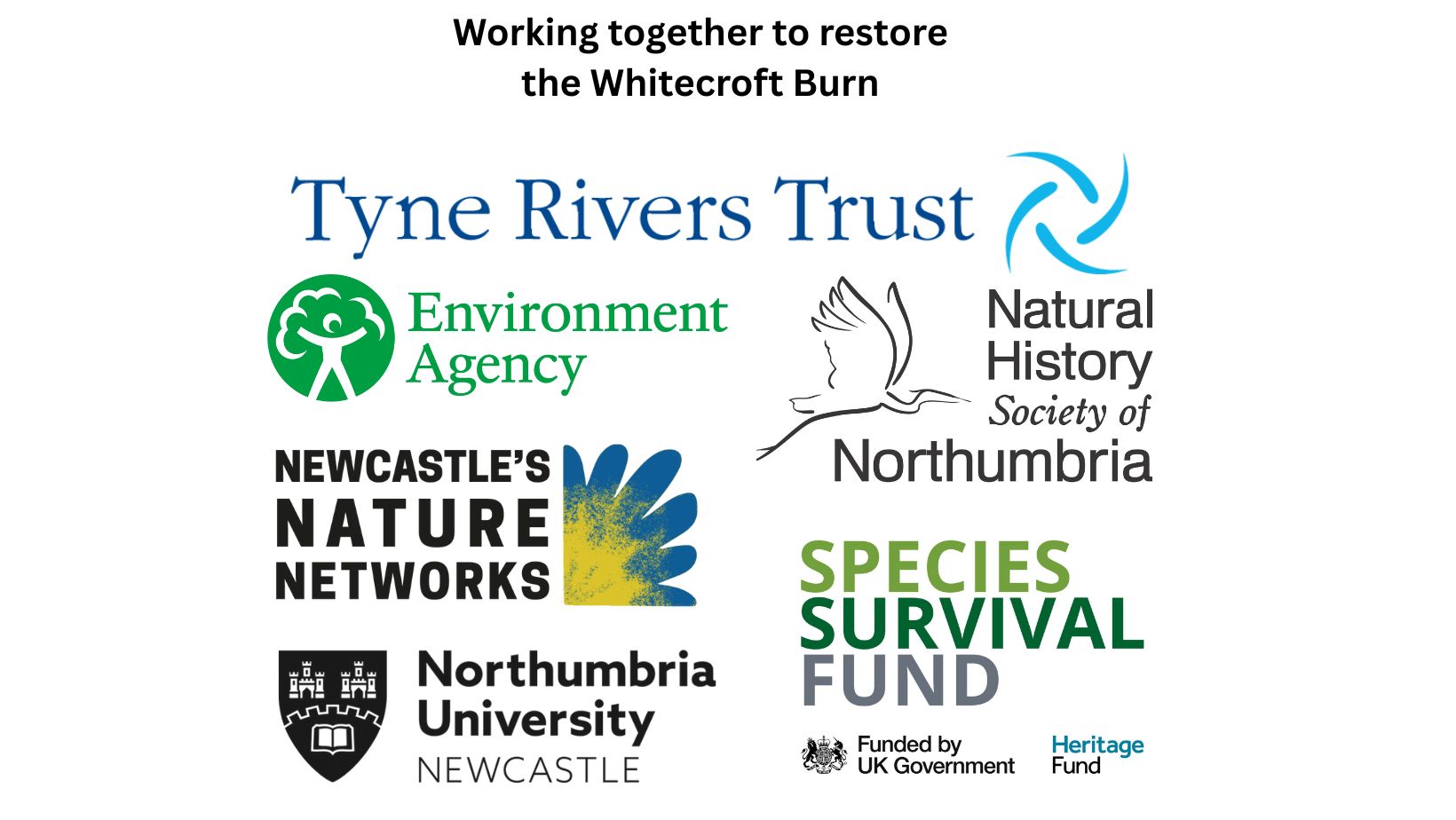Find out more about an exciting project improving water quality and creating important habitats at Gosforth Nature Reserve
The Whitecroft Burn Project is a river restoration project on the site of Gosforth Nature Reserve.
The aim of the project is to return the river to a more natural water course and by creating a system of wetlands and ponds, it will in turn improve water quality and create a more diverse habitat for wildlife in an area which has previously been vulnerable to flooding.
It is being carried out by a partnership consisting of Tyne Rivers Trust, the Natural History Society of Northumbria, the Environment Agency and Northumbria University, with additional support from the Newcastle Nature Networks project, as part of the Species Survival Fund.
Nature-based solutions will be used to help slow the flow of water. They will also have the benefit of reducing sediment and trapping pollutants before they run downstream.
In addition, by increasing space to store water on the site, a mosaic of habitats will be created for a greater diversity of wildlife to thrive.
The Whitecroft Burn project is a fantastic example of what can be achieved when multiple organisations come together with a shared vision. By using nature-based solutions, we’re not only restoring the river to its natural state and mitigating flood risk, but we’re also creating a more biodiverse and resilient ecosystem for future generations to enjoy. This partnership is a testament to our collective commitment to a healthier environment.
Maddy Fowler, Urban Catchments Project Manager for Tyne Rivers Trust
Gosforth Nature Reserve has been under the management of the Natural History Society of Northumbria since 1929, making it the North East’s oldest nature reserve and a nationally significant sanctuary of wildlife and plants.
The project delivery is expected to commence in November 2025; however, preparatory works are already underway at the site.


